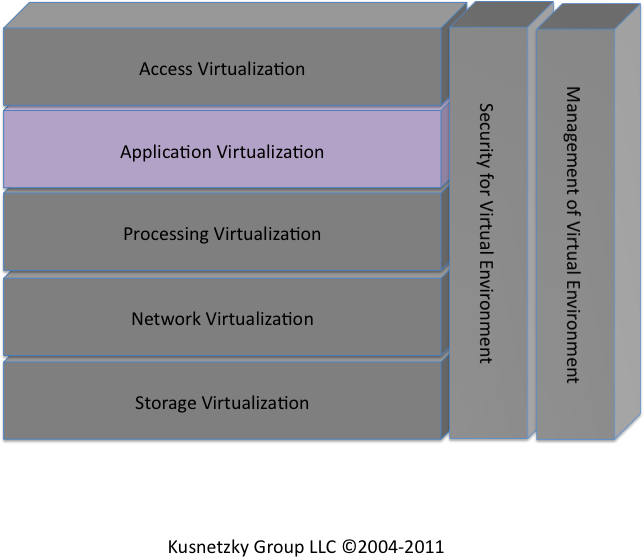Chapter 3. Application Virtualization: Application Isolation, Delivery and Performance
What Is Application Virtualization?
Let’s dive one level lower into the model (see Figure 3-1). Application virtualization has two forms: client-side application virtualization and server-side application virtualization. Application virtualization runs on top of the operating systems that manage the functioning of systems. It makes it possible for an application to be “encapsulated” or run in an artificial environment.
The major difference between access virtualization and application virtualization is that a portion, or perhaps all, of the application actually runs on the local device rather than on a remote server. The encapsulated application still requires support functions offered by a specific operating system, so this means, for example, that encapsulated Windows applications need to be executed on a remote Windows device. This is different, by the way, from processing virtualization (see Chapter 4 for more information on processing virtualization), which isolates a workload from either the operating system or physical system it is running on.

As with other virtualization technologies, application virtualization has a long track record of success. The earliest forms of application virtualization were developed by mainframe suppliers, such as IBM, Burroughs ...
Get Virtualization: A Manager's Guide now with the O’Reilly learning platform.
O’Reilly members experience books, live events, courses curated by job role, and more from O’Reilly and nearly 200 top publishers.

